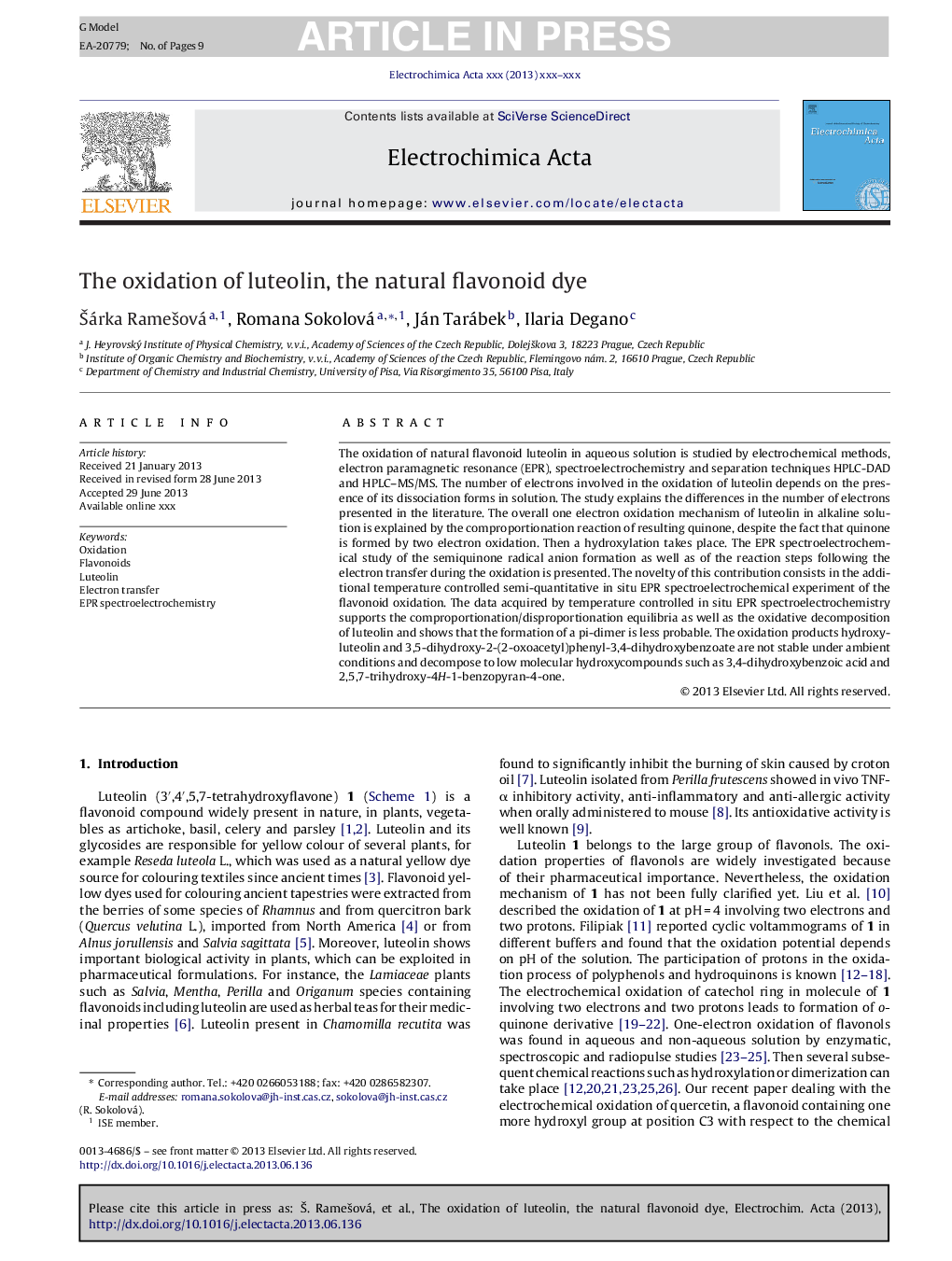| کد مقاله | کد نشریه | سال انتشار | مقاله انگلیسی | نسخه تمام متن |
|---|---|---|---|---|
| 6615769 | 459622 | 2013 | 9 صفحه PDF | دانلود رایگان |
عنوان انگلیسی مقاله ISI
The oxidation of luteolin, the natural flavonoid dye
ترجمه فارسی عنوان
اکسیداسیون لوتئولین، رنگ طبیعی فلاونوئیدها
دانلود مقاله + سفارش ترجمه
دانلود مقاله ISI انگلیسی
رایگان برای ایرانیان
کلمات کلیدی
موضوعات مرتبط
مهندسی و علوم پایه
مهندسی شیمی
مهندسی شیمی (عمومی)
چکیده انگلیسی
The oxidation of natural flavonoid luteolin in aqueous solution is studied by electrochemical methods, electron paramagnetic resonance (EPR), spectroelectrochemistry and separation techniques HPLC-DAD and HPLC-MS/MS. The number of electrons involved in the oxidation of luteolin depends on the presence of its dissociation forms in solution. The study explains the differences in the number of electrons presented in the literature. The overall one electron oxidation mechanism of luteolin in alkaline solution is explained by the comproportionation reaction of resulting quinone, despite the fact that quinone is formed by two electron oxidation. Then a hydroxylation takes place. The EPR spectroelectrochemical study of the semiquinone radical anion formation as well as of the reaction steps following the electron transfer during the oxidation is presented. The novelty of this contribution consists in the additional temperature controlled semi-quantitative in situ EPR spectroelectrochemical experiment of the flavonoid oxidation. The data acquired by temperature controlled in situ EPR spectroelectrochemistry supports the comproportionation/disproportionation equilibria as well as the oxidative decomposition of luteolin and shows that the formation of a pi-dimer is less probable. The oxidation products hydroxy-luteolin and 3,5-dihydroxy-2-(2-oxoacetyl)phenyl-3,4-dihydroxybenzoate are not stable under ambient conditions and decompose to low molecular hydroxycompounds such as 3,4-dihydroxybenzoic acid and 2,5,7-trihydroxy-4H-1-benzopyran-4-one.
ناشر
Database: Elsevier - ScienceDirect (ساینس دایرکت)
Journal: Electrochimica Acta - Volume 110, 1 November 2013, Pages 646-654
Journal: Electrochimica Acta - Volume 110, 1 November 2013, Pages 646-654
نویسندگان
Å árka RameÅ¡ová, Romana Sokolová, Ján Tarábek, Ilaria Degano,
